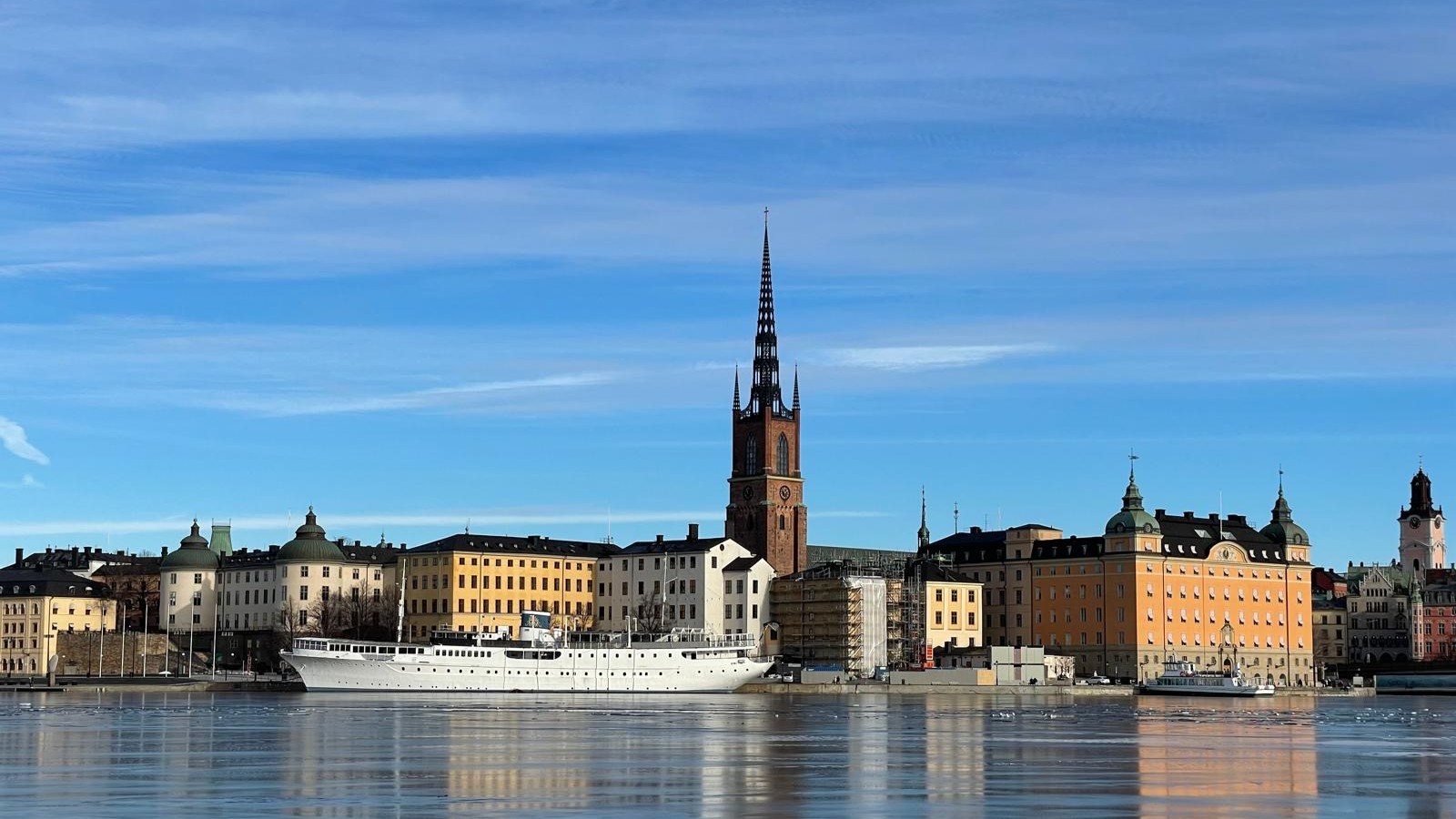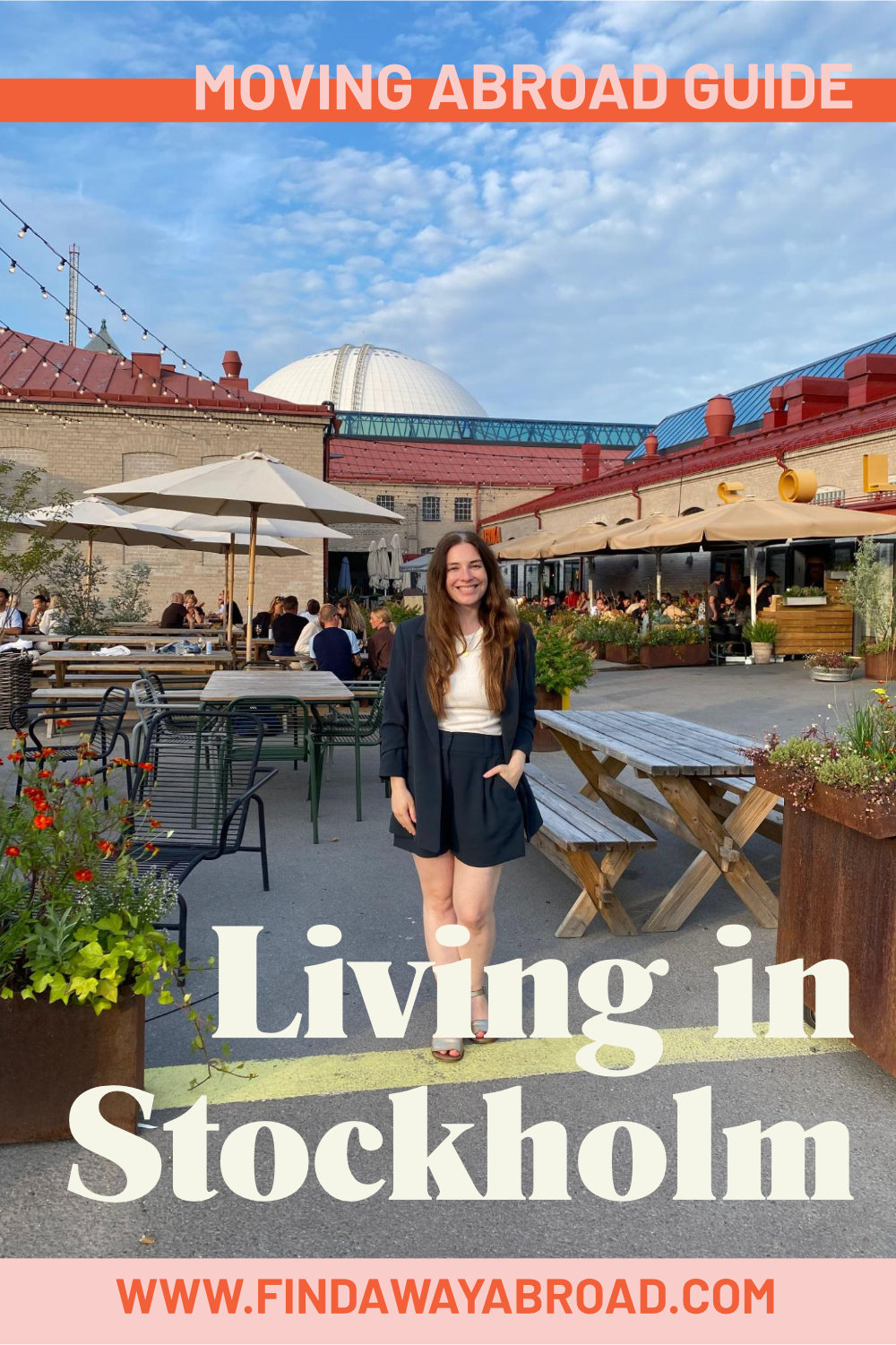While Stockholm isn't known for its tropical climate or extraordinary cuisine, it definitely has a lot going for it. As Sweden's biggest city and known as 'The Venice of the North', it is beautifully built upon 14 islands connected by bridges and is surrounded by the sea.
Stockholm is a vibrant city that changes with the seasons. While you can fill your summers visiting the many beaches and swimming spots, kayaking around the city centre, or hopping on a ferry to discover some of the 30,000 islands in the Stockholm archipelago, the long dark winters call for embracing the local 'fika' culture, making your way from one cosy cafe to another.
Having lived here for two years now with my Swedish partner and toddler, I'm keen to share some of my favourite tips and tricks for navigating this city as a foreigner.
Let's dive into what it's really like living in Stockholm to see if this could be the city abroad for you, too.
Short on time? Here's the cheat sheet
💭Living in Stockholm is great for those seeking a better work-life balance in a lively city.
🏠Check out moving to the neighbourhoods Södermalm, Östermalm or Nacka.
🛂Most non-European foreigners who move here are on work, student, or working holiday visa.
💰Cost of living is notoriously high here. Earn travel rewards on all expenses with a Capital One Venture Card.
☂️Although the winter months are long, dark, and cold,
🏖️City residents more than make up for it during the long summer days and plentiful time off work.
Moving to Stockholm
In general, Stockholm is a safe and welcoming city for foreigners with a lot of international students and professionals living and working in the city.
Language Barrier
Most Swedes perfect English, so it's pretty easy to get by. However, it's a good idea to learn some Swedish if you plan to stay in Stockholm for a longer period of time.
While you can use the usual language apps like Duolingo and Babbel for learning Swedish, you can also access the free government-provided language courses called SFI (Svenska för invandrare). I studied through SFI for three months and it really helped improve my Swedish to the extent where I can communicate in Swedish (albeit imperfectly) at shops, restaurants, medical appointments, and nursery drop-offs.
Making Friends
It can be hard to make friends in Stockholm. While Swedish people are friendly, they often take a while to warm up and tend to be less open to new people, preferring to focus on pre-existing friend groups.
After my baby was born, I went to ‘öppna förskolan’ which are public playgroups for new parents and their babies, and while everyone was nice enough, we never progressed from basic small talk.
However, some of my international friends who work for Swedish companies have been able to make some local friends through work. Joining a sports club or society can also be a good way to meet people.
Basically, Swedes need a reason to hang out for it to not be awkward. If all else fails, there are plenty of Facebook groups for social internationals to connect on and organize meet-ups.
Work Life Balance
The work life balance in Sweden is very good. In most work places, flexible working hours and arrangements can be negotiated, especially if it's related to childcare duties.
Holidays are taken very seriously, with most Stockholmers taking their right to four consecutive weeks off during summer to flock to their cabins outside the city.
Practicalities
Sweden is a highly digital society, so once you arrive it's important to apply for a 'personsnummer' which is a personal ID number through the tax agency. You need this to open a bank account and get hold of the precious BankID which is your key into the digital world. It is used for banking, booking medical appointments, accessing public services, and booking events.
It is also good to know that Sweden is a cashless society (I have never seen Swedish money!) and payments are made by card or using the 'Swish' app.
Cost of Living

While living in Stockholm is great, it does come at a cost.
Monthly rent for a one-bedroom apartment is commonly around 15,000 SEK, while a 30-day public transportation travel card costs 1,060 SEK, and a coffee and cake will set you back around 70 SEK.
The cost of groceries has also gone up quite a bit since I moved here, including the price of my beloved Marabou chocolate! (Which despite the price hike, I still definitely recommend you treat yourself to!)
The high cost of living isn't all doom and gloom however as education, healthcare, and childcare are pretty much free, which for those of you considering a stint in Stockholm with tiny humans is a huge bonus!
Not completely sold on Stockholm? See what it's like living in Malmö instead.
Apartment Hunting
Like in many other places, apartment hunting in Stockholm can be difficult. Due to the housing shortage, Swedes have often spent years on long waiting lists to get their rental apartments and tend to sublet them out when they move elsewhere.
This means that subletting is the most common and easiest way to find an apartment, which partly explains the high prices.
A useful starting point for this kind of apartment hunting is through the blocket x qasa website, which is how my partner and I found our initial apartment before arriving in the city.
We were able to do a digital from abroad, signed the lease digitally, and agreed to a flexible 12-month contract with a one-month notice period. This made it easy for us to move out once we found our bearings in the city and decided to buy our own place.
Recommended Neighbourhoods

When considering where you might want to live in the Swedish capital, some neighbourhoods I would recommend are:
Södermalm
A vibrant area with lots of restaurants, parks, vintage shops, and cute wine bars. It also hosts the cool outdoor club ‘Trägården’ - a favourite among Stockholmers.
Östermalm
A fancier district that offers great shopping, top of the line dinner experiences and some of the coolest clubs in the city.
Nacka
A bit further out towards the archipelago, this is a quieter area with lots of green spaces and offers a lot of hiking opportunities and quick commute to the city centre by boat or bus.
Hägersten, Aspudden, Midsommarkransen
These are all cool up-and-coming areas a bit further from the city centre and offer slightly cheaper (and bigger) living options.
Visa Options
As an EU citizen, I am able to live and work in Sweden without a visa.
For non-EU citizens, you need to have a visa to visit or move here. Depending on the duration of your visit (under or over 90 days) you need to apply for the appropriate visa. This is just one of the many things you should know before moving to Sweden.
Some of the most common visa options are:
- Work visa
- Student visa
- Family visa
- Working Holiday visa
You can find more information about the requirements and processes on the Migration Agency's website here.
Pros & Cons of Living in Stockholm

Stockholm offers a really great place to raise a family and enjoy the Nordic lifestyle but it's not perfect. These are a few of my personal top pros and cons for you to keep in mind.
Pros
A few of my top pros about living in Stockholm are:
- Coming from one of the most densely populated countries in the world with few green spaces, one of the things I love most about living in Stockholm is its proximity to nature. There are plenty of beautiful parks, lakes, and of course the stunning archipelago within easy reach from the city centre.
- Long summer days and nights.
- Reliable, frequent, and well-connected public transport options which makes it easy to get around.
- Good quality and free childcare.
- 480 days of paid parental leave.
- A good work life balance.
- (Almost) free healthcare.
- The 'fika' culture, which basically means indulging in a copious amount of cinnamon buns, semlor, and kladdkaka without feeling guilty.
- A plethora of traditional celebrations like pagan midsummers, candle-lit Lucia ceremonies, and crazy crayfish parties (yes, you read that right!) all offering great food and interesting headwear.
Cons
Since nowhere is perfect, a few of the cons I've found are:
- It can be hard to meet people and make new friends.
- The cold dark winters can be tough, but some traditional Swedish 'Klippan' blankets, candles and a bottle of wine can help you through!
- While not a con per se, it's good to know: Sweden has strict alcohol laws which means you can only buy alcohol at the 'Systembolaget' (an off-licence) which closes at 3pm on Saturdays and don't open on Sundays. This means you have to plan your weekend antics ahead of time!
What I Wish I Knew Before Moving to Stockholm
I moved to Stockholm for my partner's job and while I expected it might take some time for me to find work, it was actually much harder than I expected. Many jobs (especially outside the technology sector) require fluent written and spoken Swedish, and the job market is very competitive. In the end, I set up my own consultancy and currently work remotely for non-Swedish clients.
Secondly, there is a Swedish saying 'there is no such thing as bad weather, just bad clothing', and I wish I had known how much Swedes live by this philosophy before moving. I would definitely recommend investing in some fashionable yet practical water/wind/snow proof clothes before coming.
Will You Try Living in Stockholm?
This Nordic city has been a fantastic place for us to live and start our family. Yes, we face long, cold winters and expensive daily life but the proximity to enjoy nature and the time given off work has given us the perfect balance to enjoy life here.
Come in with an open mind and some patience when trying to make friends and I hope you'll enjoy living here as much as I do.









.png)
.png)